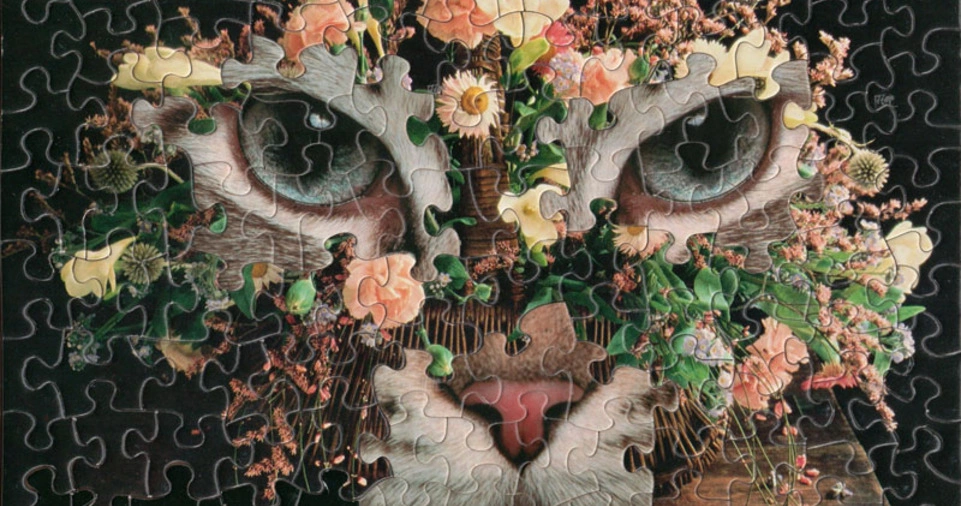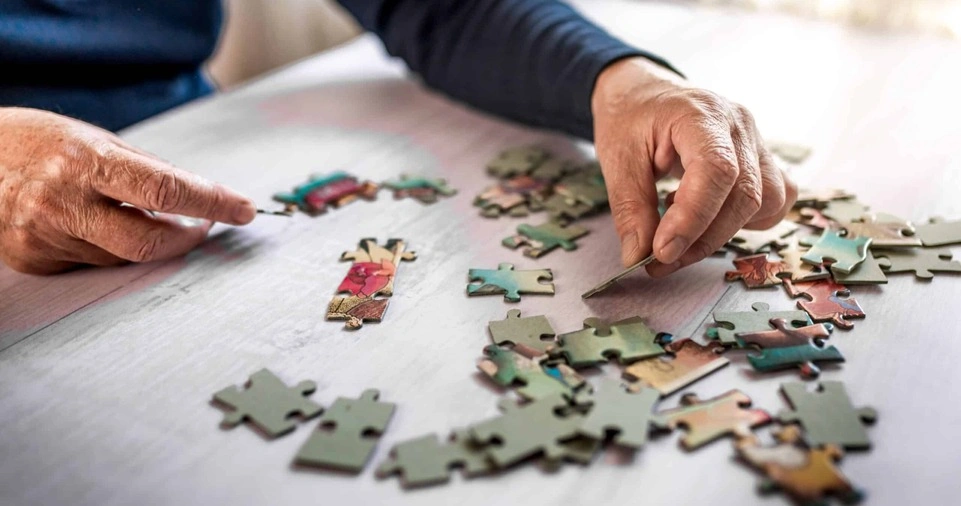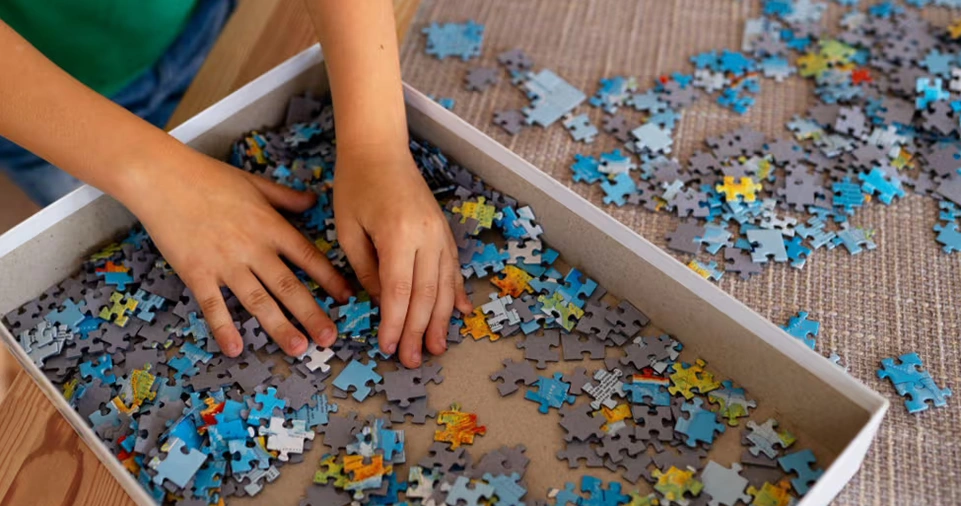Solving jigsaw puzzles is a beloved pastime for many people around the world.
Whether you’re piecing together a scenic landscape, a vibrant mosaic, or a complex abstract design, jigsaw puzzles offer a unique combination of challenge and relaxation.
But if you’ve ever found yourself spending hours struggling to find the right pieces, you’re not alone. Completing a puzzle efficiently can be a daunting task without the right strategies.
Fortunately, with a little organization and a systematic approach, you can dramatically speed up the process.
In this guide, we’ll explore seven proven techniques that will help you solve jigsaw puzzles faster while keeping the experience enjoyable.
Whether you’re a beginner or a seasoned puzzler, these tips will sharpen your skills, save time, and bring you closer to that satisfying “aha!” moment when the final piece clicks into place.
From sorting pieces effectively to focusing on distinct areas of the puzzle, we’ll dive deep into each method, offering practical advice and expert insights.
Let’s get started on transforming your puzzling experience!
Sort Pieces Before Starting
Sorting is the foundation of efficient puzzle-solving. Taking time to organize your pieces before diving into assembly can save you countless hours of frustration.
Here’s how to do it effectively:
Separate Edge Pieces
The first step in any puzzle-solving journey should be to identify and set aside the edge pieces. These pieces, characterized by at least one flat side, will form the boundary of your puzzle.
Sorting them first allows you to build the framework, giving you a clear starting point and making it easier to work on the inner sections later.
Group by Colors and Patterns
After isolating the edges, sort the remaining pieces by their colors and patterns.
For example, if your puzzle features a blue sky, a green forest, and a red brick building, create separate piles for blue, green, and red pieces.
This method minimizes the time spent searching for specific pieces during assembly.
Use Sorting Tools
Investing in sorting trays or containers can make the process even smoother. These tools allow you to keep pieces organized and prevent accidental mixing, especially if you’re working on a large puzzle.
By dedicating a little extra time to sorting upfront, you’ll create a more streamlined workflow, making the rest of the process more enjoyable and efficient.
Build the Border First
The border is like the skeleton of your puzzle. It provides structure and helps orient you as you begin to assemble the interior.
Here’s why starting with the border is crucial:
Why Focus on the Frame?
The edges of a puzzle are easier to identify and assemble because they have a flat side. This makes them distinct from interior pieces, which can have complex shapes and patterns.
Once the border is complete, it acts as a guide, helping you visualize the puzzle’s overall dimensions and layout.
How to Assemble the Border
Begin by laying out all the edge pieces on a flat surface. Look for corners first, as they’ll help you anchor the frame.
From there, match pieces based on their patterns, colors, and shapes. If your puzzle’s edge pieces are similar in appearance, focus on slight variations in shades or patterns to find the right fit.
Benefits of Building the Frame
Completing the border first gives you a sense of accomplishment early on, which can boost your confidence and momentum.
Additionally, it provides a contained area to work within, reducing the chance of misplacing pieces.
Focus on Distinct Areas

One of the most effective strategies for tackling a puzzle is to break it down into manageable sections.
Instead of trying to work on the entire puzzle at once, focus on distinct areas.
Identify Standout Features
Look for sections of the puzzle that stand out due to their unique colors, patterns, or designs.
For instance, a bright sun, a patch of flowers, or a text sign in the puzzle image can serve as an anchor point. These areas are usually easier to assemble and provide a sense of direction.
Group Similar Pieces
After identifying distinct areas, gather pieces that belong to these sections. For example, if the puzzle features a blue sky, collect all the blue pieces and sort them further based on variations in color or cloud patterns.
Work on Sections Individually
Once you’ve sorted the pieces, start assembling one area at a time.
Completing a section before moving on to the next makes the process less overwhelming and creates a sense of progress.
Focusing on distinct areas not only speeds up the process but also makes the puzzle-solving experience more enjoyable by breaking it into smaller, achievable goals.
ALSO READ: How to Find High-Quality Jigsaw Puzzles That Last
Use the Puzzle Image
The image on the puzzle box is your best friend. Think of it as a roadmap that guides you through the puzzle-solving journey.
Here’s how to use it effectively:
Keep the Box Visible
Place the box’s image in a prominent position where you can refer to it frequently. This visual reference helps you understand where each piece fits in the larger picture.
Match Colors and Patterns
Compare the pieces in your hand to the image on the box. Focus on matching colors, patterns, and shapes to their corresponding sections in the picture.
Use a Digital Image
If the puzzle box is too bulky to keep nearby, consider taking a photo of the image and using it on your phone or tablet. Zooming in on specific sections can provide additional clarity.
By leveraging the puzzle image effectively, you’ll reduce guesswork and assemble pieces with greater precision.
Work Strategically
A strategic approach can make all the difference when solving a puzzle. Instead of tackling pieces randomly, work in a way that maximizes efficiency.
Start with Large, Easy Sections
Begin by assembling the most visually distinct and straightforward sections. These areas are often easier to complete and provide a foundation to build upon.
Leave Tricky Parts for Later
Complex sections with repetitive patterns, such as water or sky, can be frustrating to work on early in the process. Save these areas for last, once you’ve completed the simpler sections and have fewer pieces to sort through.
Use the Process of Elimination
When faced with challenging sections, use the process of elimination to narrow down potential matches. Consider the shape of the pieces and how they fit together.
By working strategically, you’ll maintain momentum and avoid getting stuck on difficult sections.
Use the Shape of Pieces

Paying attention to the shape of the pieces is a powerful tool in your puzzle-solving arsenal.
While colors and patterns are helpful, the physical shape of each piece can often be the key to finding the right fit.
Identify Unique Shapes
Some pieces have distinct shapes that stand out. Look for pieces with unusual curves, notches, or tabs, as they’re often easier to place.
Match by Fit
When assembling sections, test pieces based on how well they fit together. A correct fit should feel seamless, with no forcing required.
Focus on Interlocking Pieces
Interlocking pieces provide stability and help secure completed sections. Prioritize these when assembling challenging areas.
By honing your ability to recognize shapes and match them effectively, you’ll solve puzzles faster and with greater accuracy.
Stay Organized
Organization is the cornerstone of efficient puzzle-solving.
Keeping your workspace tidy and your pieces well-sorted can save you valuable time and reduce frustration.
Spread Out Pieces
Lay out all your pieces on a flat, well-lit surface where you can see them clearly. Avoid stacking or piling pieces, as this makes it harder to find the ones you need.
Use Sorting Trays or Boxes
Organize pieces into trays or boxes based on their colors, patterns, or locations within the puzzle. This keeps everything manageable and prevents accidental mixing.
Keep the Workspace Clean
A clutter-free workspace helps you stay focused and minimizes distractions. Make sure there’s enough room to move pieces around comfortably.
By staying organized throughout the process, you’ll enjoy a smoother and more efficient puzzle-solving experience.
ALSO READ: How Does Wordle Work? Understanding the Game’s Algorithm
Conclusion
Solving jigsaw puzzles doesn’t have to be a slow or frustrating process.
By applying these seven proven techniques, you can improve your efficiency, sharpen your problem-solving skills, and enjoy the journey from scattered pieces to a beautiful, completed picture.
Remember to sort your pieces, build the border first, focus on distinct areas, use the puzzle image, work strategically, pay attention to piece shapes, and stay organized.
With practice and persistence, you’ll not only solve puzzles faster but also enhance the joy and satisfaction that come with each completed masterpiece.

